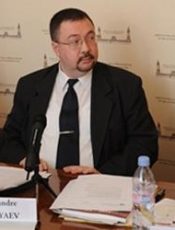On 13 January, the latest in a series of celebrations to mark the 106th anniversary of the African National Congress (ANC) party took place in South Africa. The party’s plans were announced for the first time by the ANC’s new head, Cyril Ramaphosa, who was elected at the end of December 2017.
The novelty of the moment was emphasised by the fact that more than 80 percent of the party’s governing bodies – the National Executive Committee and the TOP-6 (the Supreme Council of Six) – are new members, and neither includes the current president of South Africa, Jacob Zuma!
Ramaphosa’s speech showed that the country’s new leadership is ready to take decisive action for South Africa to achieve real economic independence. The most important points outlined by Ramaphosa in his plans to radically transform society are:
1) the expropriation of land without compensation; and
2) the nationalisation of the country’s Reserve (Central) Bank.
Land was taken away from South Africa’s indigenous population during colonisation. The position was legally formalised by laws passed in 1913 stripping South Africans of the right to own their own land. Later on, South Africans were simply evicted from their land, and even from towns and cities, during apartheid. As a result, all of the land ended up in the hands of the white colonialists.
Faced with the national liberation struggle led by the ANC, the apartheid power structure ceded political control, but the new Constitution of the Republic of South Africa retained the privileges of the white minority with regard to land ownership (the constitution provides for the possibility of land expropriation only with just compensation). Following the 1994 democratic elections, the ANC has tried to buy back land from the white minority to distribute among the landless indigenous population, but over a period of nearly a quarter of a century, only four percent of the land has been bought back.
As for the nationalisation of the Reserve Bank, this is the most important issue outlined in the new ANC president’s speech. “The ANC once more reaffirms the role, mandate and independence of the Reserve Bank,” declared Ramaphosa. “As mandated by Conference, we call on government to develop proposals, in line with international practice, to ensure full public ownership of the Bank.”
The wording could be interpreted differently, of course, including keeping it independent from the state, which is traditional for central banks. Yet the context in which the statement was made still points to nationalisation. Given the reality in South Africa, it is difficult to understand the words “to ensure full public ownership of the bank” any other way given that the South African Reserve Bank is a private company. Although performing key functions in the country’s financial, economic and even political life, the South African Reserve Bank is owned by just 650 people (and the number of actual owners is even less). Their names remain confidential, but it is these anonymous people who deal with matters such as the development and implementation of the country’s monetary policy; the issue of banknotes and coins; the supervision and control of the banking system; the management of the state’s gold and foreign exchange reserves; and the taking of all necessary measures in its role as “banker to the government”.
The issue of the Reserve (Central) Bank’s status is an issue of power. Hence resistance to the plans announced by Ramaphosa at the beginning of 2018 will be fierce. The leader of the Freedom Front Plus party, which is composed solely of members of South Africa’s white minority, has already declared that there will be a civil war should any attempt be made to implement Ramaphosa’s plans.
One more detail of Ramaphosa’s keynote speech: talking about the country’s economic development, he declared that state enterprises should become the engines of South Africa’s economy. The ANC leader called this a matter of paramount urgency.









